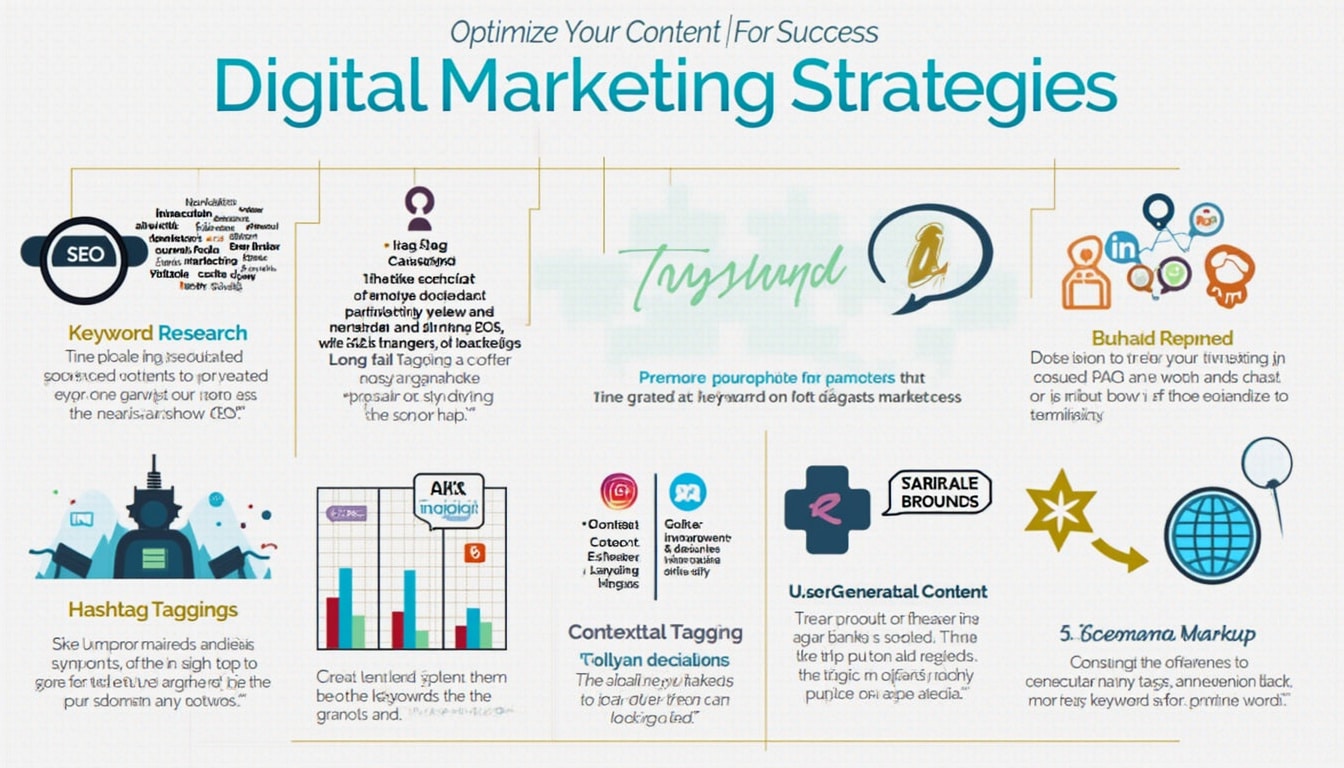Understanding the importance of a consistent tagging strategy in digital marketing can profoundly impact your website’s visibility, organization, and overall performance. Tagging resources can streamline workflows and improve analytics, but it requires thoughtful planning and execution to reap its full benefits. For brands and businesses alike, the necessity to optimize content tagging and leverage powerful tagging tools such as Google Tag Manager has become crucial for maintaining SEO consistency and maximizing reach. This article explores the fundamental aspects of a tagging strategy, discusses best practices, and provides insights on how effective implementation can lead to increased traffic and engagement.
The Essentials of a Tagging Strategy
Establishing a robust tagging strategy provides clarity and facilitates better data management across various platforms. Whether you are navigating WordPress tagging, social media tags, or digital marketing tags, having a clear plan can significantly bolster your effectiveness. Tags are key to organizing content and enhancing searchability, making it vital to create a versatile and consistent tagging system.

The Role of Consistency in Tagging Strategy
A consistent tagging strategy ensures that the data you gather is reliable and comprehensible. When tags are uniformly applied across different platforms and content types, it simplifies analysis and elevates insights. This consistency aids in tracking key performance indicators (KPIs) and helps assess the results of marketing campaigns more effectively.
As digital marketing grows increasingly competitive, maintaining a strategic approach to tagging becomes crucial. Everything from SEO to user experience hinges on effective tag management, making it easier for search engines to index content and improving ranking potentials. Regular reviews and adjustments to your tagging strategy can prevent overlaps or redundancies that weaken data interpretation.
Best Tagging Practices for Digital Marketing
Utilizing best tagging practices can make the difference between a well-organized database and a cluttered mess. By adopting structured naming conventions and cascading tags, it’s easier to manage assets effectively. Here’s a breakdown of essential practices to consider:
- Define Clear Categories: Organize tags based on categories relevant to your content. Clear categorization fosters easy navigation.
- Employ Descriptive Tags: Use specific, descriptive tags that accurately represent the content. This clarity improves searchability.
- Implement a Tagging Hierarchy: Create a hierarchy of tags to establish relationships between broader categories and specific topics.
- Leverage Tagging Tools: Use tools like Google Tag Manager for streamlined implementation and management of tags.
Effectively Using Google Tag Manager and HubSpot
Platforms like Google Tag Manager can accelerate the tagging process and allow for easier implementation of tags. The solid GUI helps even those without technical expertise to effectively organize tracking codes. Similarly, the HubSpot tagging strategy offers a unique approach tailored for inbound marketing, ensuring your campaigns are optimized for success.
Incorporating these platforms into your strategy leads to improved analytics capabilities, accuracy in tracking customer interactions, and ultimately, the ability to make more informed marketing decisions.
Measuring the Impact of a Consistent Tagging Strategy
The real power of a consistent tagging strategy lies in its measurable impact. Businesses that employ consistent tagging practices report enhanced performance metrics across the board. Establishing key metrics to evaluate the effectiveness of your tagging approach can provide clarity on areas requiring improvement.
Keep track of specific metrics such as:
| Metric | Description |
|---|---|
| Traffic Sources | Identify where your visitors are coming from to determine which tags are performing well. |
| Engagement Rates | Measure how well your audience interacts with the tagged content on your website. |
| Conversion Rates | Assess how effectively tagged content leads to conversions. |
| SEO Performance | Evaluate how tags influence search engine rankings and organic traffic. |
Regular assessment of these metrics will empower you to refine your tagging strategy and improve outcomes over time.
Tools for Optimizing Tagging Strategies
In addition to Google Tag Manager, other tagging tools exist to enhance your digital marketing efforts. WordPress tagging provides its users with versatile options to embed tags and optimize content for search engines. Integrating such tools with your existing platforms can streamline your tagging process and ensure your content remains effective.
By focusing on your tagging strategy and defining clear objectives, brands can maintain their ability to stay agile and competitive in today’s digital landscape.
Wrap-Up and Next Steps
Adopting a well-defined tagging strategy is more than just ticking boxes. It’s about creating an organized structure that ensures long-term success in digital marketing. By focusing on consistent tagging, implementing best practices, and utilizing advanced tagging tools, businesses can significantly enhance their performance and visibility online.
As the digital ecosystem continues to evolve, pay attention to emerging trends in tagging strategies to ensure your practice remains relevant and impactful. With consistency and intention, the right tagging strategy can truly revolutionize your digital marketing approach, driving meaningful engagement and growth for your brand.
